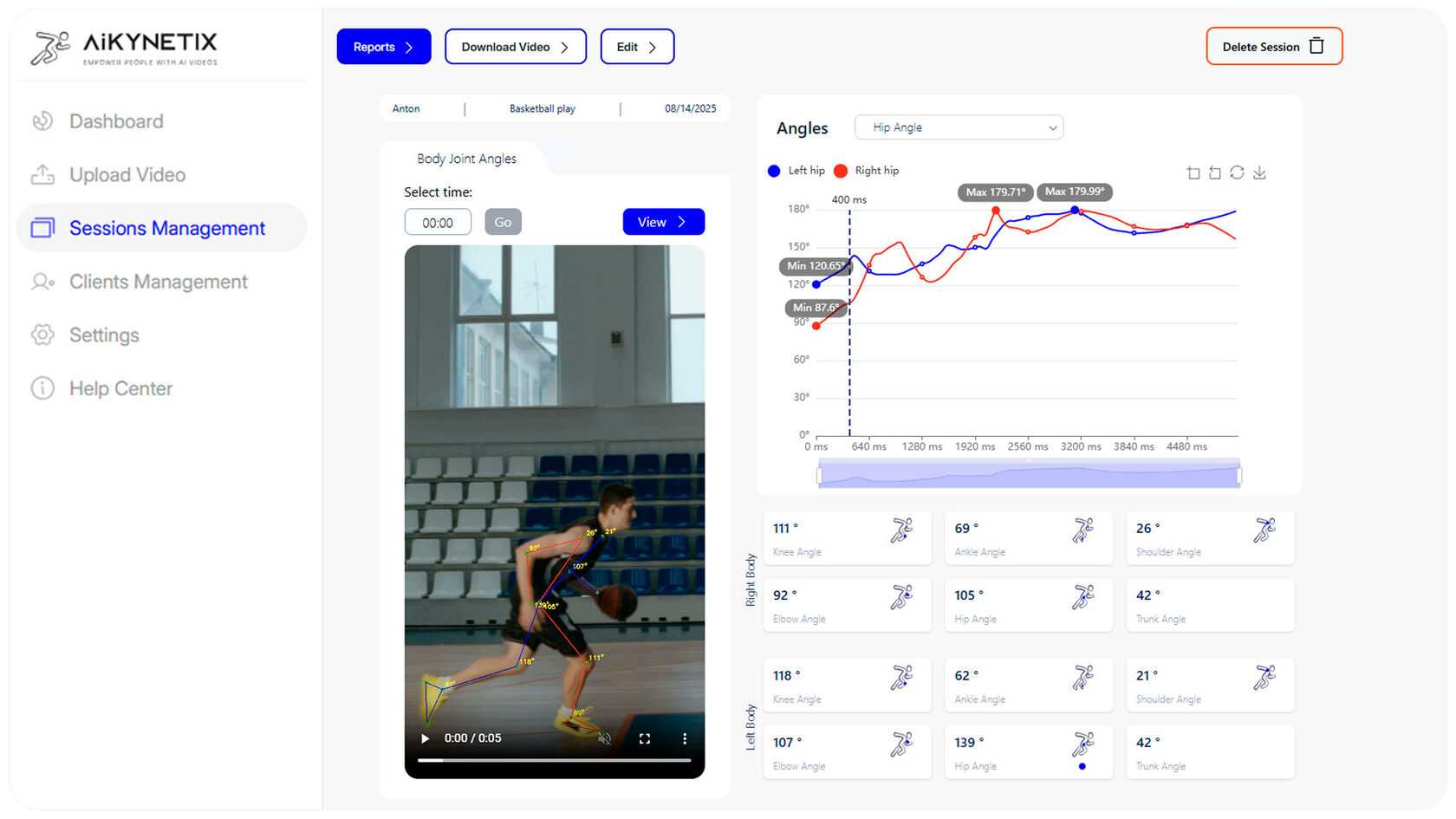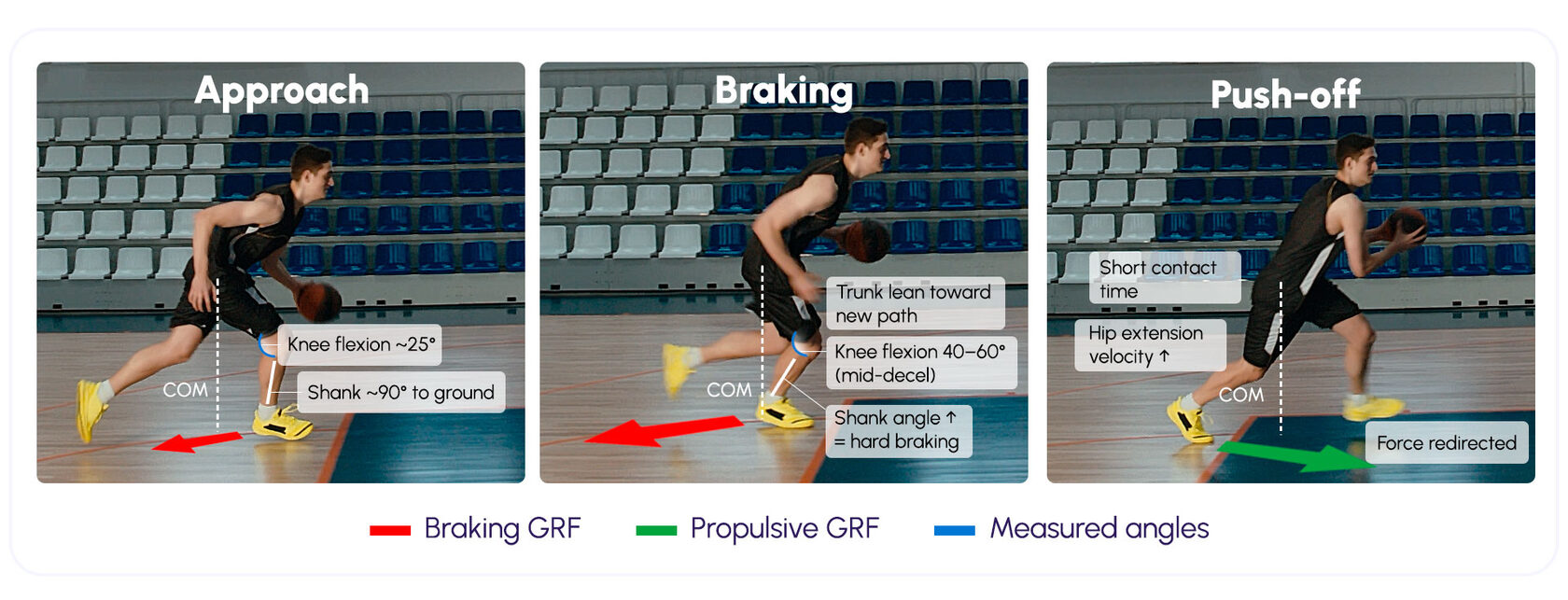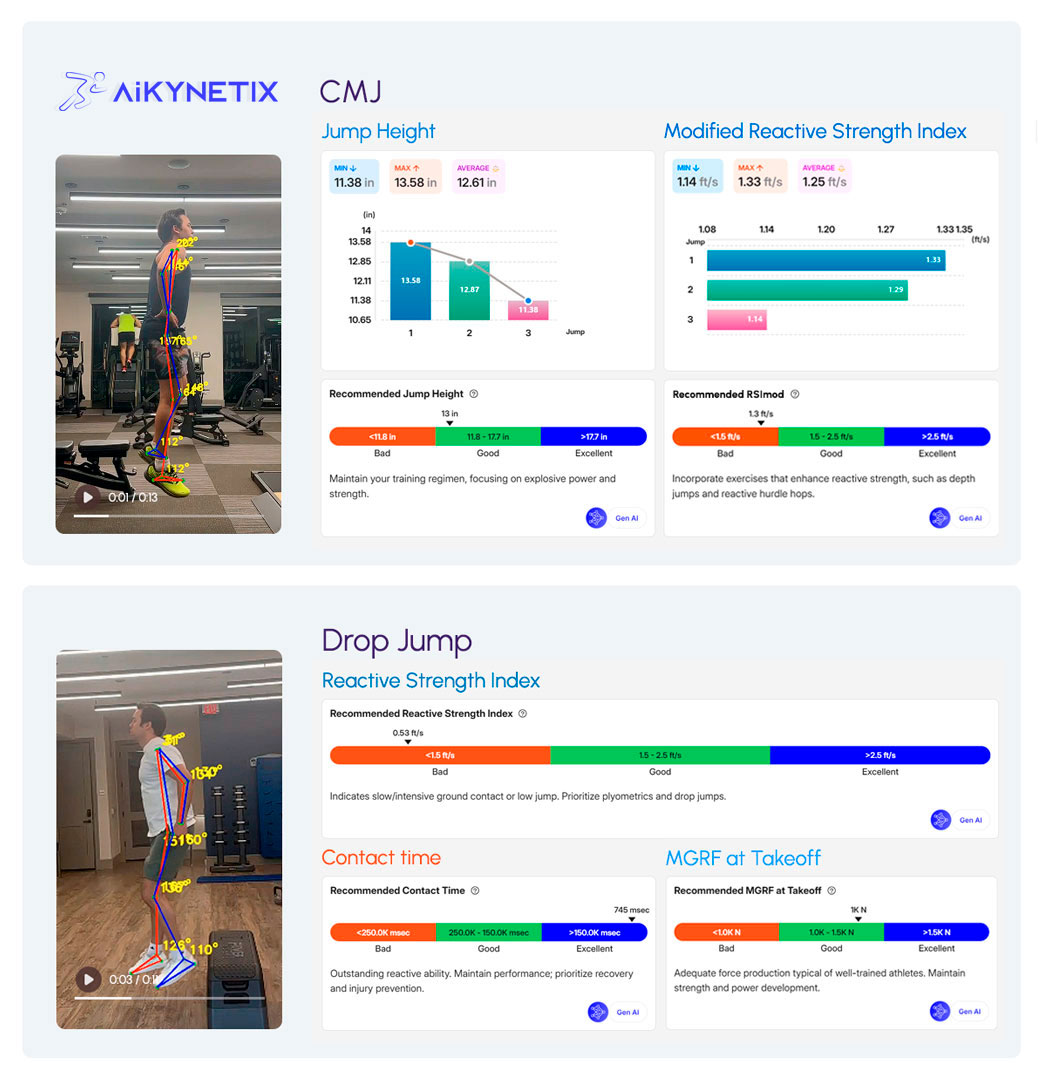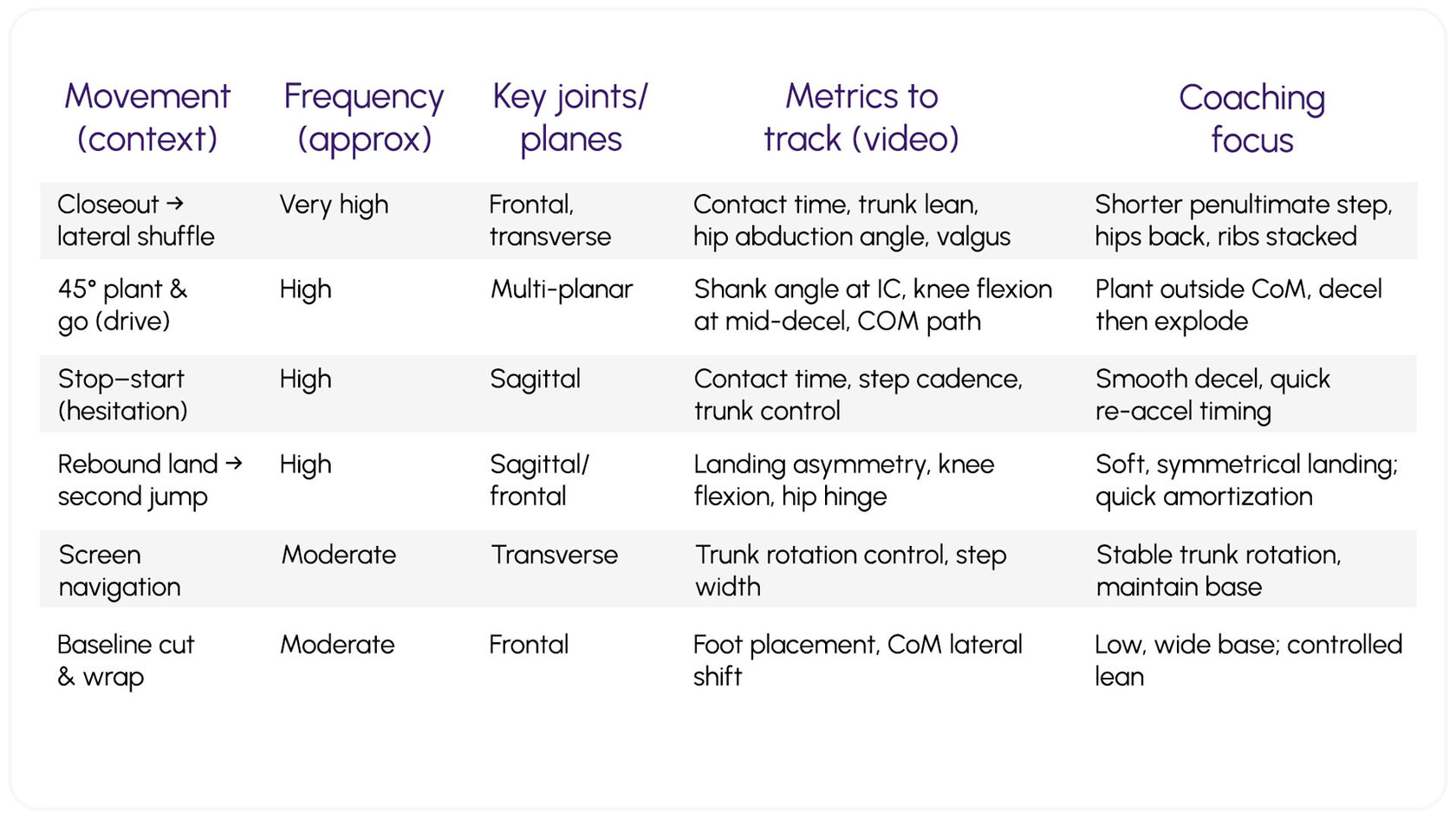Agility is the invisible edge that lets a guard shake a defender, a forward cut for a layup, or a center pivot and secure a board. It isn’t just “fast.” Agility is the ability to accelerate, decelerate, change direction, and react—all in fractions of a second to an unpredictable game. Sports scientists often sum it up as a rapid whole-body change of velocity or direction in response to a stimulus. In practice: quick movement with purpose.
Why agility rules the court
Basketball is relentlessly multi-directional: sprint, shuffle, backpedal, plant, cut, jump, land—often in actions lasting <3 seconds. “First-step quickness” wins space on offense; sharp lateral deceleration keeps you in front on defense. Even bigs rely on rapid pivots, box-out footwork, and reactive second jumps. Possessions swing on these micro-battles of acceleration, balance, and decision.
Where AI-Powered video analysis helps (quietly): With a single sideline or baseline video, a coach can quantify the building blocks of agile play—contact time, step cadence, trunk and shank angles at plant, center-of-mass (COM) path, joint ranges, and left/right asymmetry—and see how they change across practices and games. No wearables or force plates required.
Where AI-Powered video analysis helps (quietly): With a single sideline or baseline video, a coach can quantify the building blocks of agile play—contact time, step cadence, trunk and shank angles at plant, center-of-mass (COM) path, joint ranges, and left/right asymmetry—and see how they change across practices and games. No wearables or force plates required.

Pic 1. Basketball Kinematics at a Glance.
Measuring the “unmeasurable”
There’s no single gold-standard agility test. Coaches use COD (“change-of-direction”) drills—e.g., zig-zag, pro-lane shuffle, Y-drill—with and without reactive cues. Timing gates and light systems add realism by forcing decisions, not just speed.
What you can extract from simple video (AiKYNETIX example):
What you can extract from simple video (AiKYNETIX example):
- Deceleration mechanics: peak knee flexion, shank angle at initial contact (braking), trunk lean, contact time.
- Re-acceleration mechanics: time to toe-off, hip/knee extension velocity surrogates via joint-angle rate, stride re-lengthening.
- Decision cost: reaction-to-movement latency (stimulus frame to first plant).
- Asymmetry: side-to-side differences in plant angles, contact times, and exit velocities (proxied by step length/cadence).

Pic 2. 505 Agility: COM & Ground Contact Timeline.
Contact time, COM path, and toe position reveal braking vs. push-off efficiency and left–right differences.
The mechanics behind a cut
To change direction, players absorb momentum (eccentric decel), then redirect it (concentric re-accel). Two technical anchors:
1.Braking control: Excessive shank angle (tibia leaning forward) and long contact time signal “hard braking,” energy lost to heat and joint stress.
2.Force redirection: Optimal trunk lean toward the new path, knee flexion in the 40–60° range at mid-decel, and rapid hip extension at push-off improve exit speed.
How video metrics guide coaching:
1.Braking control: Excessive shank angle (tibia leaning forward) and long contact time signal “hard braking,” energy lost to heat and joint stress.
2.Force redirection: Optimal trunk lean toward the new path, knee flexion in the 40–60° range at mid-decel, and rapid hip extension at push-off improve exit speed.
How video metrics guide coaching:
- If contact time ↑ and shank angle ↑, teach “hips back / chest tall” decel, shorter penultimate step, and widen base slightly to improve force direction.
- If trunk collapses (excess flexion), add anti-flexion core work and cue “nose over toes, but ribs stacked.”

Pic 3. Forces Through a Direction Change.
Speed isn’t everything
Linear sprint speed only weakly predicts COD excellence. Agility adds perception and decision: reading a hedge, reacting to a kick-out, or baiting a drive. The “fastest” athlete in a straight line may not win the first step after a fake.
What to track (practically):
What to track (practically):
- Reaction latency (cue → first plant) from practice clips.
- Decision consistency across reps (does technique hold under fatigue?).
- Movement economy: COM path smoothness and minimal unnecessary torso rotation.
Strength, power, and the agility puzzle
Stronger legs help—especially eccentric control when stopping. Plyometrics that emphasize short contact time and stiff ankles improve “elastic” qualities. But raw strength alone fails without timing, perception, and motor control.
Quick tie-ins via AiKYNETIX:
Quick tie-ins via AiKYNETIX:
- Drop Jump report → RSI (reactive strength index) and contact time to monitor elastic power.
- CMJ report → jump height and RSImod for readiness/fatigue.
- Overhead squat → mobility/stability constraints that leak agility (e.g., ankle dorsiflexion limits, hip control).

Pic 4. Vertical Plyo Profile– AiKYNETIX CMJ and Drop Jump summaries.
Training the brain and the body
Blending plyometrics + balance + reactive drills improves agility and reduces knee risk. Make practice look like games: random light cues, live closeouts, constrained small-sided games.
How to monitor adaptation from the same clips:
How to monitor adaptation from the same clips:
- Contact time trends down, exit step cadence trends up.
- Hip/knee angles at plant become more symmetrical across sides.
- Trunk lean and COM path stabilize under fatigue.

Pic 5. Reactive Y-Drill – Pre/Post Block.
Reduced reaction-to-movement latency and shorter contact time at the decision cone.
The role of footwear (briefly)
Traction must sit in an optimal window: too little → slip; too much → joint stress. Video can flag excessive knee valgus or torsional trunk motions that may indicate a shoe–surface mismatch.
Practical layer: what happens most in games

Pic 6. High-Frequency Movements in Basketball & What to Track.
Where AiKYNETIX fits—without the hype
Think of it as a camera that returns coaching-grade numbers:
- Change-of-direction (from any practice clip):
- Inputs: single sideline/baseline video.
- Outputs: contact time, shank angle at initial contact, trunk lean, COM oscillation, joint angles, side-to-side asymmetry, and simple trend lines by athlete.
- Use it for: micro-dose plyo prescriptions; decel mechanics check; symmetry before return to play.
- Jump monitoring (10–20 sec):
- CMJ: jump height, RSImod for readiness.
- Drop Jump: RSI, contact time for elastic power.
- Use it for: deciding whether to push, hold, or deload a session.
- Mobility/stability screens:
- Overhead squat/step-down: flags ankle DF limits, hip control, trunk sway that hurt cutting.
- Use it for: warm-up design and constraint-led drills.

Pic 7. Form Analysis: From Video to Clear Cues.
Takeaway
Agility is the synthesis of muscle, mind, and mechanics. You can now measure its pieces quickly from practice video—contact time, shank and trunk angles, COM path, joint ranges, asymmetry—and coach specific changes with proof, not guesswork. Speed still matters, but decision-ready deceleration and clean redirection win more possessions.
Explore more drills and insights in the AiKYNETIX Knowledge base or start your free trial at aikynetix.app
Want more tips like this?
📬 Subscribe to our newsletter for more practical guides!
📥 Got questions? Drop us a line: info@aikynetix.com
Find us in the socials:
Facebook | Instagram | X | Telegram | LinkedIn | Strava | YouTube
Want more tips like this?
📬 Subscribe to our newsletter for more practical guides!
📥 Got questions? Drop us a line: info@aikynetix.com
Find us in the socials:
Facebook | Instagram | X | Telegram | LinkedIn | Strava | YouTube



